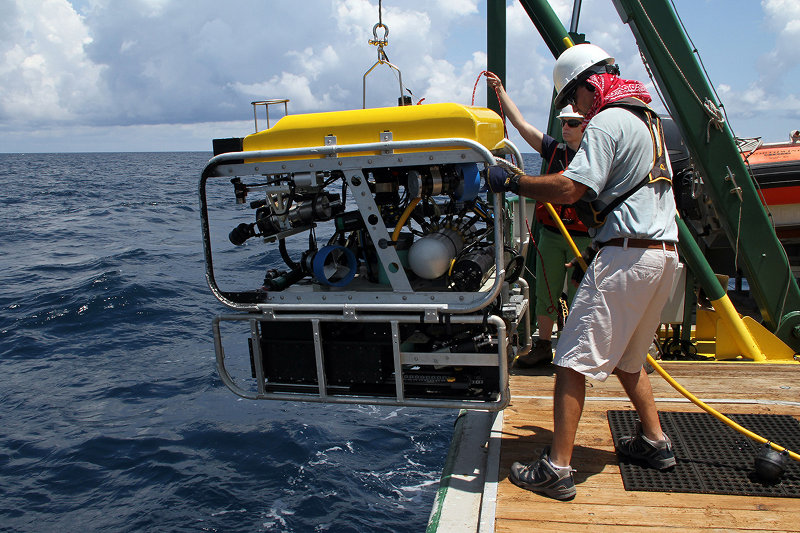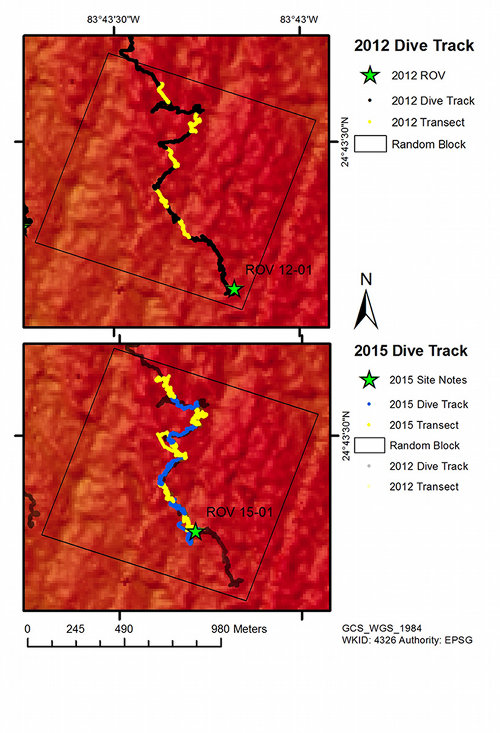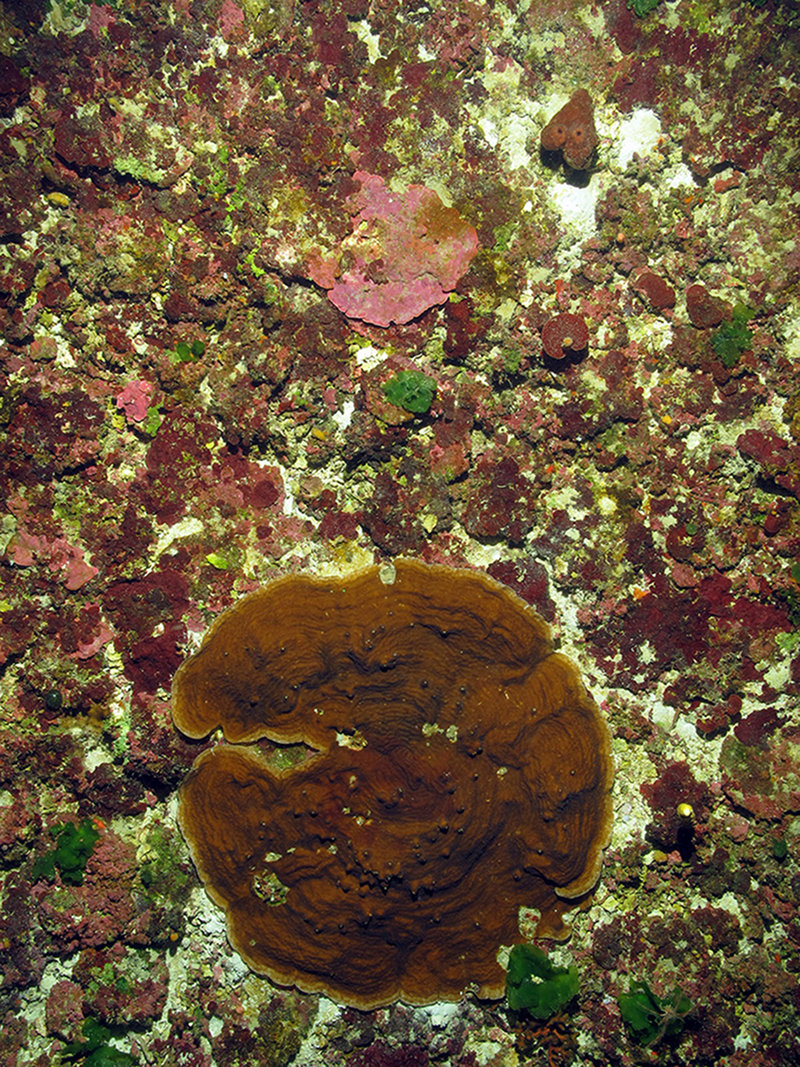
By John Reed - Florida Atlantic University-Harbor Branch
August 23, 2015

Lance Horn, of the University of North Carolina at Wilmington’s Undersea Vehicle Program, guides the Mohawk remotely operated vehicle over the stern of the R/V Walton Smith for the first dive of the 2015 Coral Ecosystem Connectivity cruise. Kimberly Puglise of NOAA’s National Centers for Coastal Ocean Science assists. Image courtesy of Brian Cousin, FAU Harbor Branch. Download larger version (jpg, 550 KB).
We are steaming towards Pulley Ridge at the break-neck speed of eight miles per hour. Why do we call it steaming on a ship? Well, over a century ago, ships were powered by steam and although we don’t use steam anymore, the term remains unchanged.
The first hurricane of the season (Danny Boy) is barreling down toward us at 15 miles per hour, but no worry, that collision course won’t take place for another week, if at all.

The planned track for our first remotely operated vehicle (ROV) dive was to repeat a 2012 dive transect as closely as possible. The figure demonstrates that both the skipper of the research vessel and ROV pilot Jason White managed to accomplish the task. Today’s track shown at the bottom very closely matches the previous track at top. Image courtesy of Stephanie Farrington, FAU Harbor Branch. Download larger version (jpg, 286 KB).
But the point of this cruise is the finality of our ‘Coral Ecosystem Connectivity’ project, the last cruise of four years of cruises. We hope to fill in all the blanks to describe what Pulley Ridge reef is, was, and may be in the future. Will these deeper, mesophotic reefs be a refuge for reef organisms (corals, fishes, and other organisms) as our shallow water reefs continue to decline in health? We want and hope to see that corals are surviving better in these deeper, more remote locations.
The first dive we are conducting on this final cruise is to revisit a dive site from the project’s first year in 2012. Today, we plan to repeat the exact dive transect and see if things have changed. Has the cover of corals, algae, and sponges changed in this short time?

Last year, the team found a new area of Agaricia spp. coral among the benthic communities on Pulley Ridge. Image courtesy of Coral Ecosystem Connectivity 2014. Download larger version (jpg, 829 KB).
When comparing our data collected in 2012-2013 to data collected from 1980-2003, we saw a dramatic loss in coral cover, over 92 percent. Then in 2014, we discovered a new, previously unknown coral area, with relatively small and therefore young corals. So, we don’t know what we’ll find yet on our first repeat dive transect, will the coral be coming back, albeit slowly, or still on the decline? We are hoping for the best.
The Pulley Ridge region is still relatively pristine, with clean, clear water, and far offshore, but within the plume of the ocean currents looping through the Gulf of Mexico. Any future catastrophic deep-water oil spills, like Deepwater Horizon, could impact these reefs and their associated organisms.
Pulley Ridge is a Habitat Area of Particular Concern, a marine protected area, protected in 2005 by the Gulf of Mexico Fishery Management Council from fishing using bottom trawls, longlines, buoy gear, and traps/pots. Pulley Ridge is the deepest known photosynthetic reef off of the continental U.S. and a prime breeding ground for commercially-important red grouper. Their nests which are 20-30 feet wide burrows are oases for hundreds of other small reef fish.